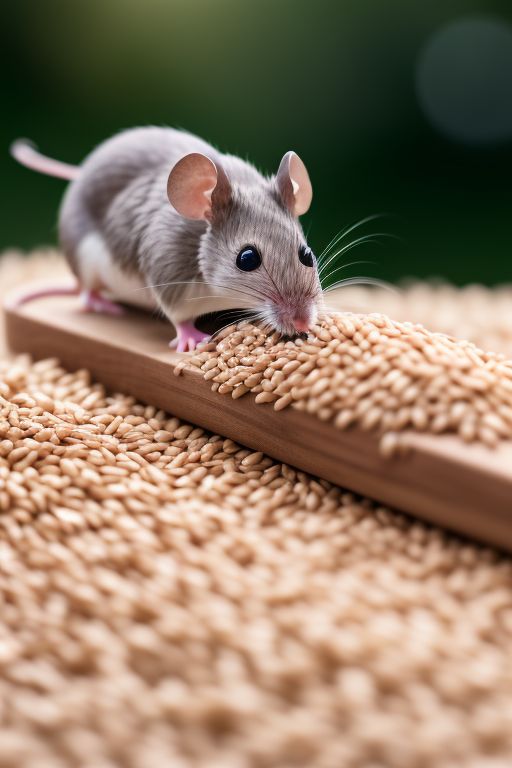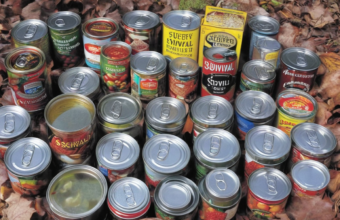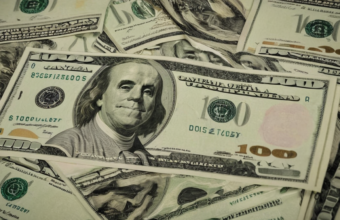Country Survival Guide for SHFT – Your Essential Guide to Thriving in Rural Landscapes
Welcome to the world of self-reliance and independence, where your survival skills are your greatest asset. Our Country Survival Guide for SHFT is your ultimate resource for mastering the art of rural survival.
Immerse yourself in our comprehensive guide, packed with expert advice, practical tips, and essential knowledge to help you navigate the challenges that come with living off the grid. From sourcing food and water to building shelter and maintaining health, we’ve got you covered.
Stay tuned as we delve deeper into the realms of country survival, equipping you with the skills to thrive in any situation. Remember, your journey towards self-sufficiency begins here. Let’s embark on this adventure together.
What Is SHFT?
SHFT, an acronym for Sudden Huge Financial Trouble, is a term used to describe a catastrophic economic event that has the potential to disrupt normal societal functions. It’s a concept deeply ingrained in the survivalist community, often linked to the need for self-sufficiency and preparedness.
Living in the country during a SHFT scenario can present unique challenges and opportunities. The isolation and self-reliance required can be a double-edged sword, demanding a comprehensive understanding of survival skills. These skills can include homesteading, hunting, farming, and foraging, to name a few.
In a SHFT situation, the country survival guide emphasizes the importance of being self-sufficient. This involves growing your own food, raising livestock, and preserving food for long-term storage. It’s crucial to understand the basics of permaculture and organic farming, which can help in maintaining a sustainable food supply.
A key aspect of survival during SHFT is the ability to protect oneself and their resources. This can involve learning basic self-defense techniques, understanding the use of firearms, and constructing secure shelters.
Living off-grid is another essential element discussed in a country survival guide for SHFT. This involves harnessing renewable energy sources, managing waste, and ensuring access to clean water.
Finally, the importance of community cannot be overstated. Building connections with neighbors and forming mutual aid networks can greatly increase chances of survival during a SHFT event.
Remember, preparation is key. The more knowledge and skills you acquire before a SHFT event, the better your chances of surviving and thriving in the aftermath.
Best Country Survival Skills
Surviving in the country during a SHFT (Shit Hits The Fan) scenario requires a unique set of skills. Unlike urban environments, country survival revolves around self-sufficiency and using nature to your advantage. One of the most crucial skills is foraging. Identifying edible plants and berries can provide a reliable food source, reducing reliance on stored supplies.
Water sourcing is another critical skill. Learn to locate natural springs, rivers, and how to purify water using natural materials.
Building a shelter is essential for protection against the elements. Familiarize yourself with different types of shelters suitable for various weather conditions and how to construct them using available materials.
Fire making is a fundamental survival skill. Fire provides warmth, a way to cook food, and a signal for help. Mastering various fire-making techniques, including friction-based methods, can be a lifesaver.
Hunting and trapping are also valuable country survival skills. They provide a sustainable source of food when foraging isn’t enough.
• Hunting requires knowledge of local wildlife, tracking, and using handmade weapons.
• Trapping, on the other hand, is a more passive food-gathering method. It involves setting up snares or traps and checking them regularly.
Lastly, navigational skills are crucial. Understanding how to navigate using natural landmarks or the stars can prevent you from getting lost.
Remember, the country survival guide for SHFT is about adapting to the environment and using what’s available to survive.
How To Find Water?
In a survival situation, knowing how to find water is crucial. A human can survive for weeks without food, but only a few days without water. One of the first things to do is to look for signs of water. This could be vegetation, birds, and insects, which all need water to survive.
Another method is dew collection. Early in the morning, you can collect dew from leaves and grass by wiping it off with a cloth and wringing it out into a container.
A solar still can also be used to collect water. This involves digging a hole, placing a container in the center, covering the hole with plastic, and placing a small rock in the center of the plastic. The heat from the sun will cause condensation, which will drip into the container.
If you are near a body of water, boiling it is an effective way to kill any bacteria or parasites that may be present.
It’s also important to know where not to look for water. Avoid stagnant water or water with a strong smell or color. These could contain harmful bacteria or chemicals.
Remember, staying hydrated is key to survival. Knowing how to find and purify water could save your life in a survival situation.
How To Build Shelter?
When it comes to a country survival guide for SHFT, knowing how to build a shelter is crucial. A well-constructed shelter can protect you from harsh weather conditions, wild animals, and even offer a sense of security.
Firstly, selecting an ideal location for your shelter is paramount. Look for a place that is dry, flat, and away from hazards such as falling rocks, flooding, or strong winds.
Once you’ve chosen a location, gathering materials is your next step. Depending on your surroundings, you might use branches, leaves, grass, or even snow. Remember, the goal is to create a structure that can shield you from the elements, so be resourceful with what’s available.
Building the Shelter
1. Start by constructing a frame. This could be as simple as leaning a large branch against a tree to create an A-frame, or constructing a more complex structure using multiple branches.
2. Next, cover the frame with your chosen materials. If you’re using branches or leaves, start at the bottom and work your way up, overlapping as you go to create a waterproof layer.
3. Finally, insulate the interior. Dry leaves, grass, or even clothing can be used to provide additional warmth.
Remember, your shelter doesn’t need to be perfect, it just needs to keep you safe. As part of your country survival guide for SHFT, understanding the basics of shelter building can make a significant difference in your survival chances.
What Are Edible Plants?
In the context of a country survival guide for SHTF, understanding edible plants is crucial. Edible plants are those that can be consumed safely by humans. They provide essential nutrients and can be a lifesaver in survival situations. They grow in various environments, from dense forests to open fields, making them a reliable food source during a crisis.
There are numerous types of edible plants, each with unique nutritional profiles. For instance, dandelions, often considered a weed, are actually packed with vitamins A, C, and K. Wild berries, such as blackberries and raspberries, are rich in antioxidants and can often be found along the edges of wooded areas.
Foraging for edible plants requires knowledge and caution. Misidentification can lead to consuming harmful plants, so it’s important to study plant characteristics thoroughly. There are several resources available to help you learn, including field guides and survival handbooks.
It’s also essential to understand the ethical and sustainable practices of foraging. Only take what you need and avoid damaging the plant’s ability to reproduce.
- Learn to identify plants: Use a field guide or take a course.
- Harvest responsibly: Only take what you need and ensure the plant can still reproduce.
Remember, in a survival situation, knowledge is power. Understanding edible plants can mean the difference between starvation and survival. It’s a vital part of any country survival guide for SHTF.
How To Start A Fire?
Starting a fire is a fundamental skill in any country survival guide. In a SHFT scenario, knowing how to start a fire can mean the difference between life and death. The first step is gathering the right materials. You’ll need tinder, kindling, and fuel wood. Tinder can be dry leaves, grass, or small twigs, while kindling is slightly larger wood, and fuel wood is the largest.
Fire-starting tools are also crucial. These can range from matches and lighters to flint and steel or a fire piston. If you’re in a survival situation without any of these tools, you can also use a lens to focus sunlight or friction-based methods like a hand drill or bow drill.
Once you have your materials, begin by creating a small pile of tinder. Add your kindling on top, leaving enough space for air to circulate. Strike your fire starter towards the tinder until it catches. Once the kindling is lit, gradually add your fuel wood, being careful not to smother the flames.
Remember, safety is paramount when starting a fire. Always have a plan to extinguish it and never leave it unattended. Starting a fire is not just about warmth and cooking, it’s also a morale booster in tough situations, a beacon for rescuers, and a deterrent for predators. It’s an essential part of any SHFT survival strategy.
How To Hunt And Fish?
Mastering the art of hunting and fishing is crucial for survival in a country setting, especially during a SHTF scenario. With a reliable hunting strategy, you can secure a steady source of food to sustain yourself and your group. Hunting requires patience, stealth, and knowledge of the local wildlife. Learn to identify animal tracks and signs, and use this knowledge to predict their movements.
To hunt effectively, it’s essential to understand the behavior of your prey. Be aware of their feeding and watering habits, and use this information to set up your hunting ground. You can use traps, snares, or a hunting rifle, depending on the situation and the animal you’re targeting.
On the other hand, fishing is a skill that can provide a significant amount of food with relatively little effort. It’s a passive method of gathering food, meaning you can set your line or net and then attend to other survival tasks. Knowledge of local fish species, their habits, and preferred bait is crucial for successful fishing.
- Identify the best fishing spots: Look for areas where fish are likely to gather, such as near rocks, under overhanging trees, or in deep pools.
- Choose the right bait: Use insects, worms, or small fish as bait. You can also use artificial lures if you have them.
- Be patient: Fishing requires patience. Don’t rush, and don’t make unnecessary noise that could scare the fish away.
Remember, in a survival situation, it’s not about sport or trophies. It’s about securing a reliable source of food. Hunting and fishing are skills that can be improved over time, so don’t get discouraged if you’re not successful right away. Practice makes perfect, and every failure is a lesson learned.
What Is First Aid In Wilderness?
First aid in wilderness refers to the immediate care given to individuals who suffer injuries or illnesses while in remote locations. It is a vital skill for any survivalist, particularly in a SHFT scenario. Country Survival Guide enthusiasts emphasize the importance of wilderness first aid due to the potential lack of immediate professional medical help.
In wilderness first aid, the focus is on stabilizing the patient and addressing life-threatening conditions. This may include handling severe bleeding, managing shock, or treating snake bites. It also encompasses environmental injuries such as hypothermia, heatstroke, or frostbite.
Knowledge of wilderness first aid includes but is not limited to:
- Recognition of symptoms
- Proper use of a first aid kit
- Appropriate response to different types of injuries
The practical application of wilderness first aid involves improvisation with available resources. For instance, using clothing for bandages or splints. It’s also important to know how to signal for help in remote locations, such as creating smoke signals or using mirrors for reflection.
Preparation is key in wilderness first aid. Regularly updating skills and knowledge, as well as maintaining a well-stocked first aid kit, can make a significant difference in emergency situations. Remember, in the wilderness, you are the first responder. Your actions can potentially save lives.
Wrapping Up: Your Country Survival Guide for SHFT
In conclusion, this post has provided a comprehensive overview of the essential elements of a country survival guide for a SHFT scenario. We’ve delved into what SHFT is and why it’s crucial to be prepared. We’ve also explored essential country survival skills, including how to find water, build a shelter, identify edible plants, start a fire, hunt, fish, and apply first aid in the wilderness.
These skills are not only useful for survival situations but also for enhancing your connection with nature and self-reliance. The knowledge you’ve gained from this post could potentially save your life or someone else’s in a SHFT scenario.
Going forward, advancements in technology and changing environmental conditions may introduce new challenges and opportunities in wilderness survival. Therefore, it’s crucial to stay updated on these trends and continuously improve your survival skills. Remember, preparation is key, and every bit of knowledge counts. So, keep learning, practicing, and preparing for whatever the future may bring.












